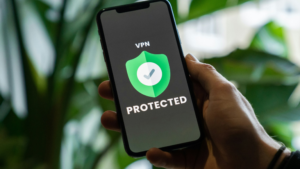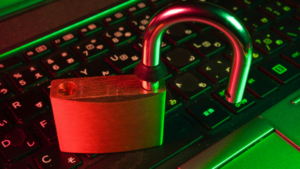Cybersecurity for Everyone: Simple Steps to Protect Yourself Online
Here’s a simplified guide to help you protect yourself online with basic and easy-to-follow cybersecurity.
The digital age brings countless benefits, but it also presents new challenges, particularly when it comes to security. Here’s a comprehensive guide packed with simple steps to fortify your online defenses and protect yourself in the ever-evolving cybersecurity landscape.

Simple Steps to Protect Yourself Online
1. Use strong, unique passwords.
Create strong passwords: combine letters, numbers, and symbols. Steer clear of easily guessable information like birthdays or common words.
Different Passwords for Different Accounts: Don’t reuse passwords across multiple accounts. Ensure that each account has a unique password.
Password Manager: Use a password manager to generate and store your passwords securely. Tools such as LastPass or 1Password can be useful for this purpose.
2. Enable Two-Factor Authentication (2FA)
Add Extra Security: Enable 2FA on your accounts whenever possible. This adds a second step to verifying your identity, usually through a text message, email, or an authentication app like Google Authenticator or Authy.
3. Keep Your Software Updated
Automatic Updates: Turn on automatic updates for your operating system, web browsers, and software. This ensures you receive the most recent security patches.
Regular Checks: Regularly check for updates if automatic updates aren’t available.
4. Be Careful with Emails and Links
Beware of Phishing: Be cautious of emails from unknown senders or those asking for personal information. Verify the sender before clicking on any links or downloading attachments.
However Over Links: hover over links to see where they lead before clicking. Be suspicious of links that don’t match the context of the email.
5. Use Secure Connections
HTTPS: Ensure websites you visit use HTTPS (look for the padlock symbol in the address bar), which means the connection is secure.
Avoid Public Wi-Fi for Sensitive Transactions: Don’t access sensitive information, like banking, on public Wi-Fi. If needed, employ a VPN to safeguard your connection.
6. Regularly Back Up Your Data
Backup Solutions: Use cloud storage services like Google Drive, Dropbox, or an external hard drive to back up important files regularly.
Automated Backups: Set up automatic backups to ensure your data is regularly saved.
7. Install Antivirus and Anti-Malware Software
Security Software: Install reputable antivirus and anti-malware programs on your devices.
Regular Scans: Schedule regular scans to detect and remove potential threats.
8. Practice Safe Browsing
Ad Blockers: Use ad blockers to reduce the risk of encountering malicious ads.
Avoid Suspicious Websites: Be wary of visiting websites that look suspicious or that you don’t trust.
9. Protect Your Personal Information
Limit Sharing: Be mindful of the personal information you share on social media and other online platforms.
Privacy Settings: Adjust privacy settings on social media accounts to control who can see your information.

10. Educate Yourself
Stay Informed: Keep up with the latest cybersecurity threats and best practices by following reputable sources online.
Online Courses: Consider taking free online courses or watching videos about basic cybersecurity.
11.Quick Tips
Lock Your Devices: Always lock your computer and smartphone when not in use.
Secure Disposal: Properly erase data from old devices before disposing of them.
Use a VPN: Consider using a VPN to encrypt your internet connection, especially on public networks.
12. Use firewalls.
Network Firewall: Ensure your home router has a firewall enabled. This aids in preventing unauthorized access to your network.
Software Firewall: Use a software firewall on your devices to provide an additional layer of security.
13. Encrypt Your Data
Full Disk Encryption: Use tools like BitLocker (Windows) or FileVault (Mac) to encrypt your hard drive, protecting data in case your device is lost or stolen.
Encrypted Communication: Use encrypted messaging apps like Signal or WhatsApp for secure communication.
14. Be cautious with IoT devices.
Secure Your Smart Devices:
Change default passwords on Internet of Things (IoT) devices like smart thermostats, cameras, and assistants. Moreover, regularly update their firmware to ensure they have the latest security patches and protections against potential vulnerabilities.
Network Segmentation: Place IoT devices on a separate network from your main devices to limit potential breaches.
15. Monitor your accounts.
Account Activity: Regularly check your bank, credit card, and online account statements for unauthorized transactions or changes. Additionally, this proactive approach helps you detect any suspicious activity early on, allowing you to take immediate action to protect your financial assets and personal information. Additionally, monitoring your accounts can help you detect any suspicious activity early on and take appropriate action to safeguard your finances.
Security Alerts: Set up alerts for suspicious activity on your accounts.
16. Educate Your Family
Family Awareness: Teach family members, especially children and the elderly, about online safety practices.
Parental Controls: Use parental controls to monitor and limit children’s internet usage and exposure to risks.
17. Strong Passwords
Passphrases: Consider using passphrases (e.g., “Horse Battery Staple!”) that are easy to remember but hard to guess.
Avoid Common Patterns: Do not use obvious passwords like “123456,” “password,” or your username.
18.Two-Factor Authentication (2FA).
Authenticator Apps vs. SMS: Authenticator apps are generally more secure than SMS-based 2FA as SMS can be intercepted.
Backup Codes: Save the backup codes provided during 2FA setup in a secure place.
19. Email Security
Email Encryption: Use encrypted email services like Proton Mail for sensitive communication. In addition, these services provide an extra layer of security, ensuring that your emails remain private and protected from unauthorized access or interception. Furthermore, these services provide an extra layer of security, ensuring that your emails remain private and protected from unauthorized access or interception.
Regular Clean-Up: Regularly delete old emails and empty your trash folder.
20.Secure Connections
VPNs:
Services like Nord VPN, Express VPN, and Cyber Ghost provide secure connections, especially useful on public Wi-Fi.
Browser Extensions:
Use browser extensions like HTTPS Everywhere to enforce HTTPS connections on websites.

Conclusion
Cybersecurity transcends individual actions; it’s a web of protection that extends far beyond the individual. In essence, while securing your own digital space is paramount, the benefits ripple outwards to safeguard your loved ones as well. In essence, securing your own online presence is crucial, but the benefits extend outward to safeguard those around you as well.
While securing your own online presence is crucial, the benefits ripple outwards to safeguard your loved ones as well. Secure yourself online, then spread the knowledge! Together we build a stronger defense against cyber threats Imagine a community where everyone is equipped with the knowledge and tools to navigate the digital world safely. Together, we can create a more secure online environment for everyone.


1 thought on “Essential Cybersecurity Tips for Everyone to Stay Safe”